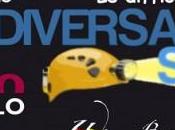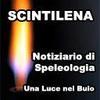L’Acquedotto Romano ipogeo e la Fontana di Helvius a Sant’Egidio del Monte Albino (Salerno, Campania). Giovanni De Feo, Sossio Del Prete, Michele Manco, Francesco Maurano, Alfonso Tortora
Riassunto
Le ricerche speleologiche condotte negli ultimi anni stanno approfondendo le conoscenze su alcuni piccoli ma interessanti acquedotti ipogei diffusi sul territorio campano. Queste opere sebbene caratterizzate da modesti sviluppi, rappresentavano importanti fonti di approvvigionamento idropotabile per piccole comunità rurali.
In questa nota si riporta lo studio e il rilievo topografico di una galleria drenante ubicata nel comune di Sant?’Egidio del Monte Albino, in provincia di Salerno, situato alle falde del settore settentrionale dei Monti Lattari, non lontano dalle note città romane di Pompei, Nocera e Stabia.
L’acquedotto è stato interamente scavato in depositi di conoide costituiti da alternanze di livelli di ghiaie e piroclastiti pedogenizzate per complessivi 478 m di sviluppo. Con riferimento ai soli condotti idraulici, il sistema di gallerie risale nella fascia pedemontana per circa 16 m al fine di drenare le acque di falda che si raccolgono nel materasso della conoide detritico-alluvionale che si sviluppa allo sbocco del Vallone del Lupo.
L”opera è composta da un ramo principale e tre rami laterali minori. Le tracce più antiche dell?abitato in cui si trova l?acquedotto, facente parte dell?antica Nuceria (odierna Nocera), sono rappresentate dai resti di una villa rustica del I sec. a.C. ? I sec. d.C., successivamente inglobati nella cripta dell?’abbazia di Santa Maria Maddalena in Armillis.
Alla stessa epoca appartiene anche un blocco marmoreo con raffigurazioni del dio Sarno, in cui è realizzata la ?fontana di San Nicola? o ?fontana di Helvius? (dal nome del pretore di Nuceria, Publius Helvius, che la fece realizzare).
Il dio viene raffigurato sui diversi lati del blocco nelle due versioni iconografiche di giovane e di uomo maturo, riferibili ai vari tratti del fiume Sarno che vanno dalla sorgente alla foce. La fontana in marmo, connessa all?acquedotto, fornisce una datazione indiretta anche sull?epoca di realizzazione del sistema di gallerie.
The Roman Aqueduct and the Helvius’ Fountain at Sant’Egidio of Monte Albino (Salerno province, Southern Italy).
Abstract
The speleological research in recent years are improving the knowledge on some small but interesting underground aqueducts spread over the territory of Campania. Although these works had modest developments, they were important sources of water supply for small rural communities. This paper reports the study and topographic survey of a drainage tunnel located in the municipality of Sant’Egidio del Monte Albino, in the Salerno province, at the foot of the northern sector of Monti Lattari (Sorrento Peninsula) not far from the famous city of Pompeii and Stabia. The aqueduct was entirely dug in alluvial fan deposits consist of alternating layers of gravel and reworked pyroclastic deposits and paleosoils for a total of 478 m of development. The difference in elevation covered by the hydraulic duct is about 16 m. The aqueduct drained the groundwater from the alluvial fan deposits of Vallone del Lupo. It is composed of a main branch and three minor lateral branches. The first sector of the main branch runs in SE direction for about 207 m, with relief of 2 m (gradient 1%) and is almost straight. In this sector, two shaft, spaced 74.7 m, served as collimation during the excavation works. As regards the two lateral branches, the first runs to the SW and has a development of about 64 m for a total height difference of about 1 m (gradient 1.8%), while the second is much smaller (about 15 m long by 0.5 m in difference of elevation).
In section, the underground voids are vaulted and covered with a remake opus incertum or squared stones. In the second half of this first sector, the vault is often in natural rock (gravel). The second sector of the main branch of the aqueduct form a large loop with a development of about 59 m and has a difference in elevation of 7.25 m (gradient 12.2%). In this sector the duct presents a considerable increase of gradient (up to 18%) and a reduction in height, that reduces from 1.5-1.6 m in the first sector to about 1 m. Between the second and the final sector of the aqueduct there is a shaft (1.5 m in diameter and at least 18 m in height). Near the well there is a long tunnel with staircase and arched vault that goes up 12 m toward the ground surface. The last sector of aqueduct is divided into two branches in rock. The first develops to the NE for 50 m with low gradient (2.6%), whilst the second for 51 m to the SE with a higher gradient (12.7-17%). A rustic villa of the I century B.C. ? I century A.D., nowadays included in the crypt of the Abbey of St. Maria Maddalena in Armillis, is the oldest remain of settlement in the territory of Sant?Egidio del Monte Albino who was part of the ancient Nuceria. Another archeological document of this same period is the ?fountain of Helvius?, now locally named ?fountain of St. Nicholas?, carved from a block of white marble. On the fountain there are representations of the Sarno god. The god appears on different sides of the block and represents the various sections of the Sarno river, from the source to the mouth. Archeological researches confirm that the ?fountain of Helvius? and the rustic villa were realized from Publius Helvius, magistrate of Nuceria, between I century B.C. and I century A.D. The aqueduct was connected to the fountain and to this important rustic villa and its construction is dated to the same period.
Opera Ipogea è la Rivista Semestrale della Società Speleologica Italiana – Commissione Cavità Artificiali
Per informazioni, iscrizioni, servizio abbonamento, collaborazioni, consulta l’allegato:
http://www.scintilena.com/wp-content/uploads/2013/11/Promo-Opera-2013_02.pdf







